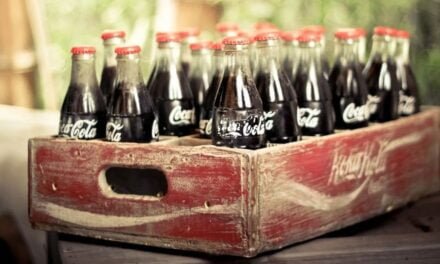The Indian beer industry has undergone a transformation. Out of many variants of beer now available in the market craft beer has shown the fasted growth rate. The beer industry has matured during the last decade and options are now many for the connoisseur of beer. Beer lovers now have all the options, noted Rajat K Baisya.
In spite of having restrictions on marketing, advertisement, and promotions in alcoholic beverages, beer is growing at a healthy rate. For a long time Indian beer was synonymous with lager but during the last decade craft beer including wheat beer, has made in-roads into the market and growing steadily. Beer is normally produced from barley malt which is germinated barley seeds but the market has been created for wheat beer as well. The wheat beer as such is produced largely from wheat malt. In some areas like beer pubs in the cyber city in Gurgaon as well as in other sectors in Gurgaon and around MG Road in Bangalore, one can find many beer parlours, microbreweries as well as beer fountains serving a variety of beers to choose from. They will even sample those beers for tasting and the customer can finally decide which beer he wants for him or his guests.
The range can be from dark beer to light beer with varying degrees of carbonation with variations of the basic ingredients used for the production of beer. The percentage of alcohol, colour, flavour, and taste will change accordingly. The Indian beer market is gradually maturing and youngsters are patronising and driving that newfound growth in this sector. Another trend I have recently observed that beer is now mostly served in a smaller pint size green glass bottle containing 330 ml of beer. The large amber colour bottle containing 650 ml of beer is only sold in the retail outlets. Restaurants, clubs, hotels have switched over to this new pint green bottle. One reason for this is that it is little more profitable as the price is little higher and margins are also higher than the large 650 ml bottles.

Ben Verhaert, President South Asia of AB InBev recently announced their plan to launch the two new variants and he also expressed great confidence that their experience and market dominance will help them to get the leadership position in this wheat beer segment as well which has been witnessing significant growth.
Out of many variants of beer now available in the market craft beer has shown the fasted growth rate. There are about 170 microbreweries in India where consumers go and can see beer is being produced in glass fermenters and can sample various types of craft beer and decide which one to drink. That kind of choice was not available earlier. Indians want cheap intoxication and therefore strong beer still is the largest segment representing about 85% of the total market. The wheat beers have seen significant growth in the recent past.
The start-ups and brands like Bira, Simba, Corona etc. are quite popular now. There are over half a dozen brands that are available mostly from start-ups selling wheat beer in India. Seeing their success, the large beer producers and the global leaders like Anheuser Busch InBev, in short, AB InBev and UB have decided to launch the wheat beer in the market to take on these start-ups. The market is, therefore, hotting up to fight it out in next summer. Both AB InBev and UB sells imported wheat beer. UB imports Edelweiss and AB InBev imports Hoegaarden brands of wheat beer respectively and sell in the Indian market. However, seeing the growth of this sub-segment AB InBev has set up an Indian unit to launch two wheat beer variants next month in November first week itself. It has also signed an MOU with IHCL to open microbreweries inside Taj properties next year. And United Breweries will start selling its locally produced wheat beer a month later by the year-end.
Bira 91, Simba and White Rhino have challenged the dominance of AB InBev and UB in this niche and fastest-growing segment and also challenging microbreweries. After Vijay Mallya sold his holding, Heineken controls both UB and AB InBev and together they control almost three fourth of the total beer market in India. The imported wheat beer Edelweiss and Hoegaarden are priced much higher in comparison with their rivals from many start-ups and hence their growth was much lower. AB InBev has now set up an Indian unit 7 Rivers Brewing Company to introduce two new wheat beer variants Machaa and Veere that will hit the market when this November issue of PFI is just going to be out while UB will introduce the local variant of wheat beer a month later in December.
Ben Verhaert, President South Asia of AB InBev recently announced their plan to launch the two new variants and he also expressed great confidence that their experience and market dominance will help them to get the leadership position in this wheat beer segment as well which has been witnessing significant growth.
This new product will be brewed at AB InBev’s Aurangabad brewery with ingredients sourced from Rajasthan, Haryana and Madhya Pradesh and the 330ml bottle can be priced at Rs 140 a bottle which itself is almost half of the price of their imported Hoegaarden brand of wheat beer. As per the plan disclosed by UB, the locally produced wheat beer will be launched initially in large cities starting with the cities in Karnataka. The bars and restaurants in India increasingly are stocking Belgian Witbier and German Hefeweizen style wheat beer triggered by the increasing consumer demand. As per the plan, both these two types will now be produced in India by the largest beer manufacturers and will compete with other brands from new and much smaller players.
The Indian beer industry has undergone transformation. Even a decade ago local brands and only lager beer were sold in the country. But during the last one decade or so the industry has transformed significantly. This transformation has been mainly driven by the entry of other global brands. SAB Miller entered the Indian market through the acquisition of the beer business of Shaw Wallace.
Heineken also entered taking equity in United Breweries and then subsequently took control of the UB beer business. Carlsberg came and started producing beer setting up plants here as a grass-root investor. Their Touborg brand of strong beer has become quite popular and has already achieved a market share of about 18% in the strong beer segment. Then came the boutique beer companies importing beer and selling through beer parlours and restaurants and hotels. In this category of craft beer, we can include Bira, Samba, etc.
Then came the strong wave of microbrewery and today we have about 170 microbreweries in the country and more are coming up. Some of these are an imported second-hand plant from Europe. Then we have witnessed many new start-ups in brewing craft beer and we have seen wheat beer, dark beer. We also get all imported brands of beer now in India. Most of the large distributors like Lakeforest in the north who are both distributors and retailers of alcoholic beverages keep the stock of all types of imported popular brands of beer.
In some of the markets in Gurgaon, one can find over twenty such pubs selling a variety of beers and microbreweries in one location so much so that one gets confused about where to go. Beer is offered here in these outlets and restaurants in pitchers, jars, and also in glass. If a couple of people are visiting, taking one pitcher will be economical. The beer industry thus has matured during the last decade and options are now many for the connoisseur of beer. Beer lovers now have all the options. One popular brand of dark ale beer called ‘Guinness’, I have still not seen. But that will also be soon found in these outlets. This growth was possible because a large segment of youngsters is now drinking beer.
ALSO READ:
Beer Industry Look to Drive Recovery: Oxford Study















